UNDERSTAND GILAN PROVINCE
Gilan or Guilan is a beautiful region of Iran along the coast of the Caspian Sea. The forested coastal plains rise up quickly into the Alborz Mountains. Rasht is a city in the north of Iran around 40 kilometers from the shore of the Caspian Sea. This region in the North of Iran and South of Caspian Sea has been of interest in this study due to its specific potential of visiting. Nature of Gilan province with a mild climate, dense forests, and beautiful landscapes such as sea, waterfalls, forest-covered mountains and plenty of flowing rivers, green gardens and countryside have created potentials for different types of activities. The cultural and historical richness of Gilan along with a large diversity of local lifestyle let this province to be a candidate for Ecotourism. All these above come up with the necessity of further developing of ecotourism in Gilan on the international scale
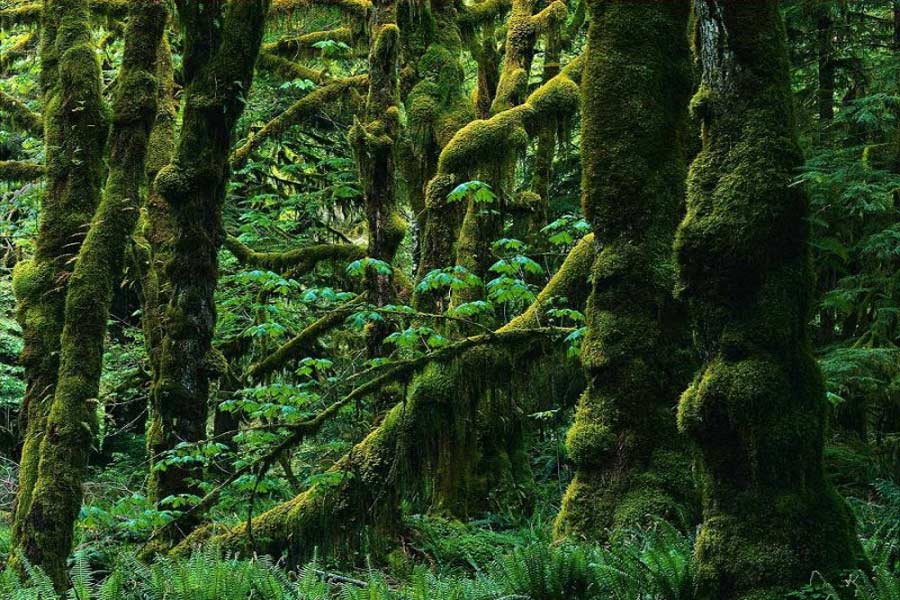
WHAT TO SEE IN GILAN
Shahrdari Building
The Shahrdari is the Rasht’s most identifiable landmark. it's colonial-style tempered by a token mini-dome topping a distinctive whitewashed tower. It looks great when floodlit at night
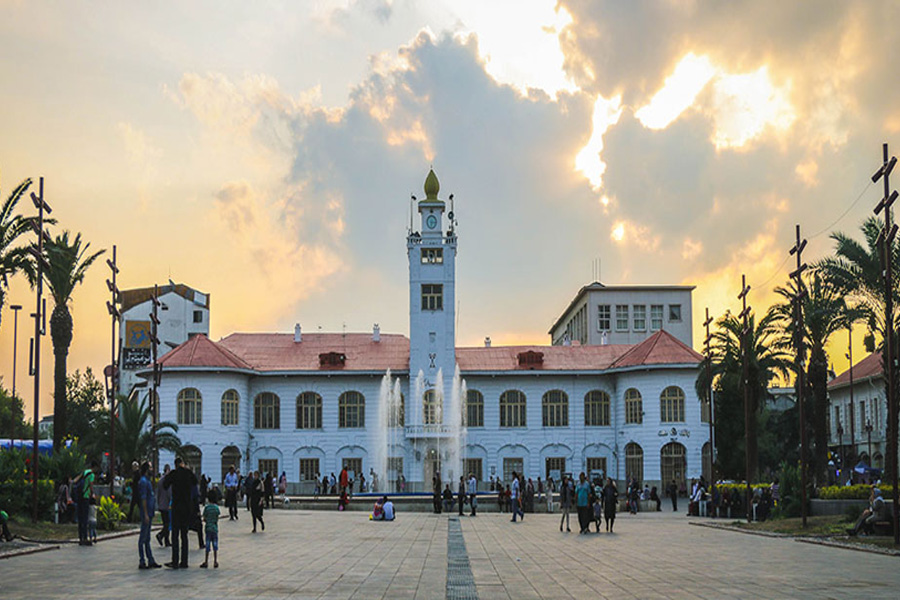
Rudkhan Castle
Over 50 kilometers southwest of Rasht, in deep green and temperate rainforests of Gilan, well-preserved Rudkhan Castle or Qal’e Rudkhan in Farsi overlooks the lush woods with the streams cascading down the mountain. Some historians say the construction of the castle dates back to the Sassanid era, over 14 centuries ago. But it has been renovated around the 10th century During Seljuq dynasty. The castle is built from stone and is famous for about 1000 stairs which get you to top of it, then prepare yourself for 50-minute steep trekking and wear your hiking shoes. Climb up to have a great view of the fortress and its surroundings. There are vendors and shops along the way where you can have a snack and else. If you want to feel the mysterious atmosphere of this intact ancient castle, visit it on a foggy day. You can also enjoy plenty of traditional food and drinks along the way

Rasht Grand Bazaar
Rasht Great Bazaar is the heart of the economy in Gilan Province and is located in the old texture of Rasht. Rasht Bazaar dates back to the Safavid era (1501–1736). Unlike similar traditional bazaars, it is not covered and has no ceiling domes or lightwells. The bazaar has maintained its traditional appearance throughout the years and is still a place where agricultural products, different fish, local foods and handicrafts are sold.
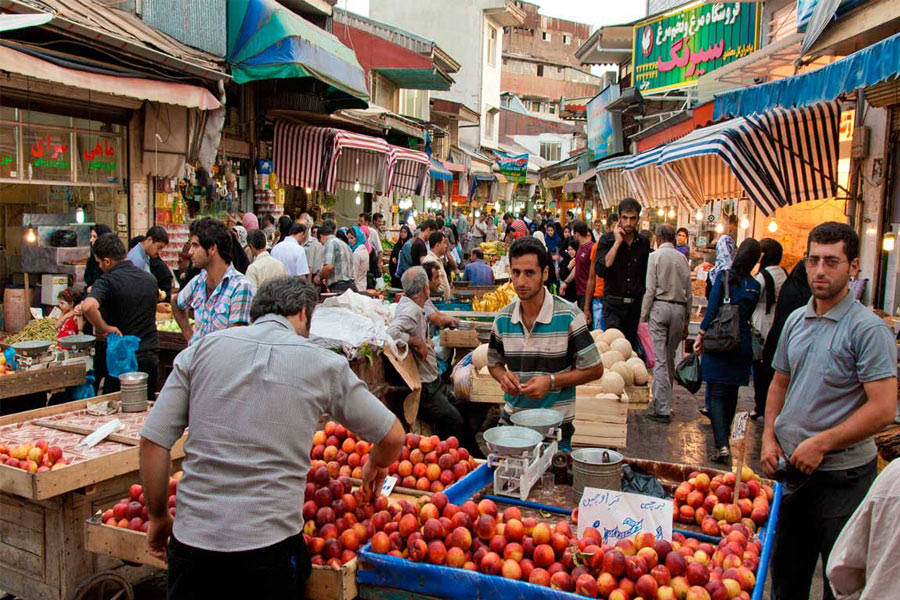
Anzali Lagoon
Anzali Lagoon is one of the most beautiful natural attractions of the northern Iranian province of Gilan. The lagoon, which is actually a wetland, divides the city of Bandar-e-Anzali into two parts and is considered to be one of the best locations for bird watching. That is to say, until 2012, around 187 bird species have been observed and recorded here.It is also home to more than 80,000 wintering birds such as ducks, geese, swans, and coots. This astonishing wetland is surrounded by paddy fields and fish ponds and about two-thirds of the whole lagoon is covered by reeds.
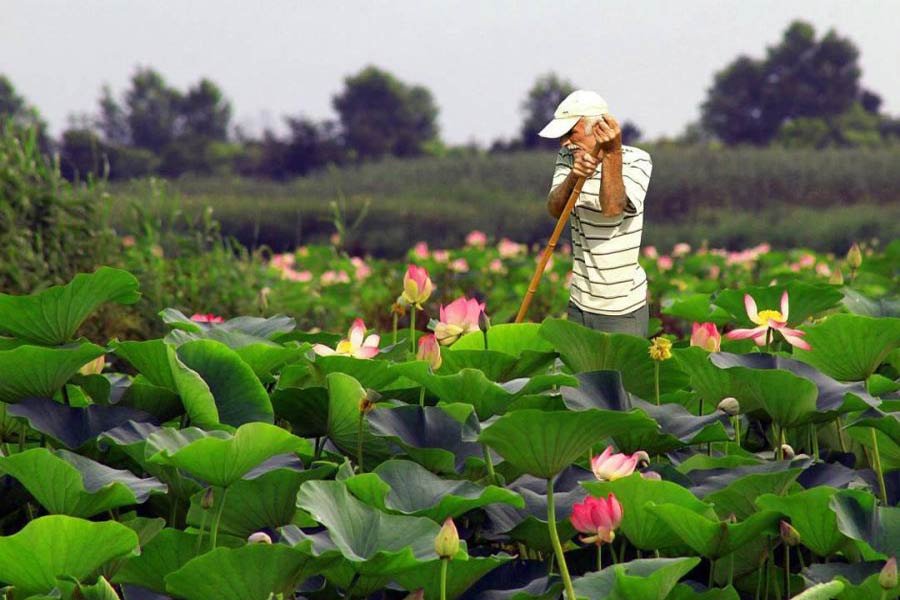
Gilan Rural Heritage Museum
Located in Saravan- Shaft road, before police station, 18th km of Rasht- Qazvin freeway. About a four-hour walks are needed to visit all parts of this breathtakingly verdant museum in the forest and get to know all styles of cottage architecture through rural history.Showcasing traditions and customs give you the opportunity to explore the rural living environment and even take a picture of local clothes. You can also buy handicrafts or even have a piece of hot flat bread. There are coffee shops and restaurants in which you can have a bite of Sour Kabob or Baqali-Qatoq. Many rural houses demonstrating the architectural style of the coastal or plain as well as mountainous areas of Guilan has been identified and subsequently, have been dismantled and reconstructed in the museum

Masouleh Village
The historical village of Masouleh is located 55 kilometers from Rasht in a forested mountain area. This 16-hectare village has a population of 600 and neighbors the cities of Khalkhal in the west, Masal in the north and Tarom in the south. Masouleh-Rood-Khan River flows near to the village and its surrounding forests are populated with beech, Caucasian elm, oak, alder and ash trees. Masouleh has a combination of humid subtropical and mountain climates, experiencing mild, wet summers and cold, wet winters. The village has 87% humidity and is shrouded in thick, cloudlike fog 100 days a year. Kohneh Masouleh or Old Masouleh, which is located 6 kilometers northwest of the village, is the original site where Masouleh was founded. The site sits atop a hill on which the ruins of stone walls are still visible. Archeological excavations have found that these walls belonged to rooms and homes with iron melting furnaces. Traces of ceramics and metal tools from the 10th and 11th centuries have also been found at the site. About 800 to 1,000 years ago the people of Old Masouleh abandoned the site for unknown reasons and gradually relocated to the current village along with people from other parts of the country. Masouleh is a tiered village in which the roofs of homes higher on the slope serve as courtyards/paths for homes lower on the slope. Masouleh courtyards/ paths are connected via stone steps. There is a 100-meter difference from the highest point of the village to the ground. The village consists of four quarters: Khaneh-bar, Masjed-bar, Asad Mahaleh, and Kesh Sar . Homes are mostly two-story structures and rarely single- or three-story. A large Masouleh home consists of a hallway, basement, storage room, stairs that connect the first and second floors, bathroom, guest sitting room, family living room, winter family room and a small Iwan (room vaulted on three sides). Smaller homes are much simpler and more compact. Mudbrick, wood rafters and wild moss are the main materials used in Masouleh structures. The wild moss that grows abundantly in the village insolates structures against water damage. Once every year, Masouleh residents apply yellow mud to the exterior of their homes and cover roofs with lavender mud both of which are found on the banks of Masouleh-Rood-Khan River. Masouleh Bazaar, the open-air market that is considered the economic heart of the village, has a view of the forest and houses iron smithing, knife making, and Chamoosh Douzi (handmade, embroidered leather footwear) workshops as well as grocery stalls and bakeries. Masouleh has three Imamzadehs (mausoleums built in honor of the direct descendants of the Prophet), one of which is inside the village and the other two are in nearby mountains. The village has a number of 20- to 30-meter waterfalls and several mineral springs with therapeutic properties. Masouleh and Old Masouleh were registered as National Heritage Sites in 1976 and 2007 respectively
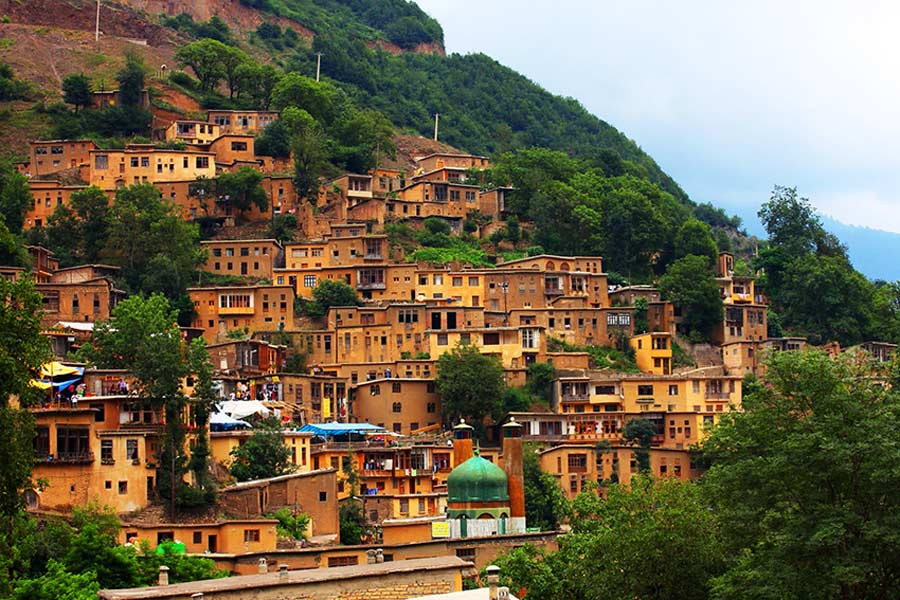
Visadar Waterfall
Visadar Waterfall, with 15 m high, is an impressive place located in a mountainous area and along a lush road. The surrounding rock cliffs are also attractive. Adventurous visitors can swim downstream from the waterfall
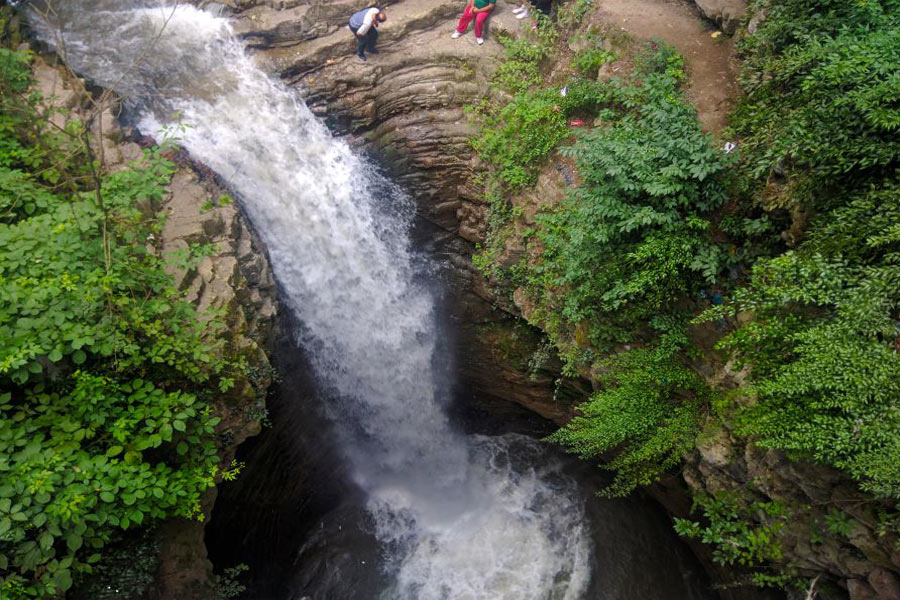
Saqalaksar Lake
Saqalaksar Lake is a unique place having a beautiful and calm nature where you can get relaxed and enjoy the silent atmosphere of the forest around the lake. There is also a cozy café beside this lake. The route to this place is really nice and scenic as well
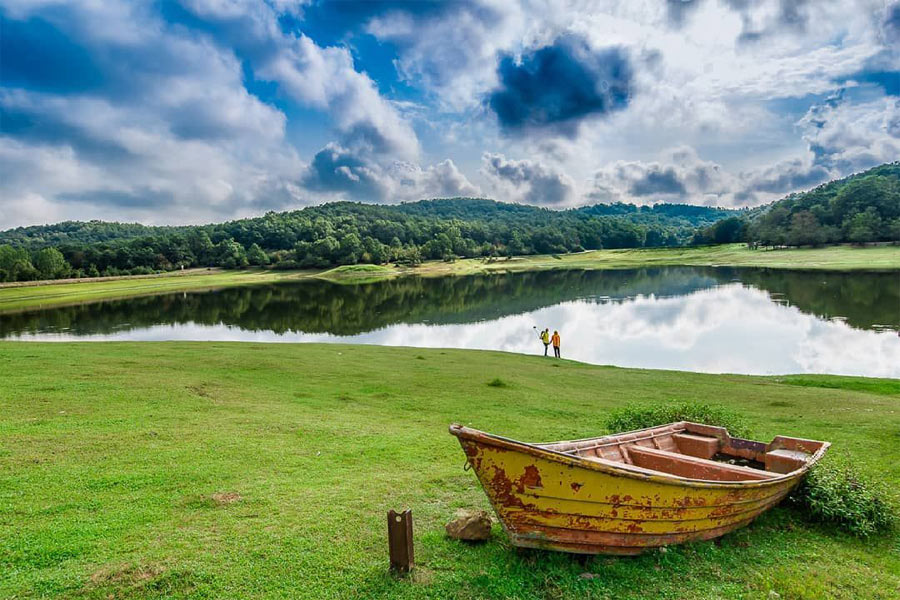
Gisum Forest
Gisum is another tourist attraction and an area with really beautiful nature in Gilan Province, including forest and beach. You will depart from forest to the beach through a really amazing road in the heart of the dense Gisum Forest
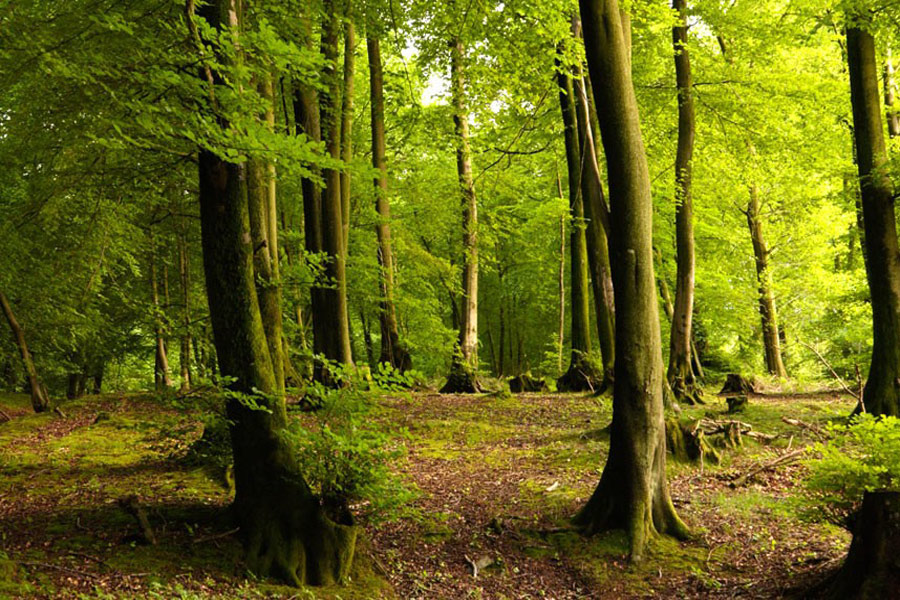
Masal County
The city of Masal is a countryside in lush highlands of Gilan Province, it’s a relatively untouched spot in the nature of Northern Iran. It’s hard to express its beauty through words. There is a really picturesque village in this region which is called “Olasbelangah” with lovely wooden houses. It’s also possible for Visitors to stay in a hotel or local homes there
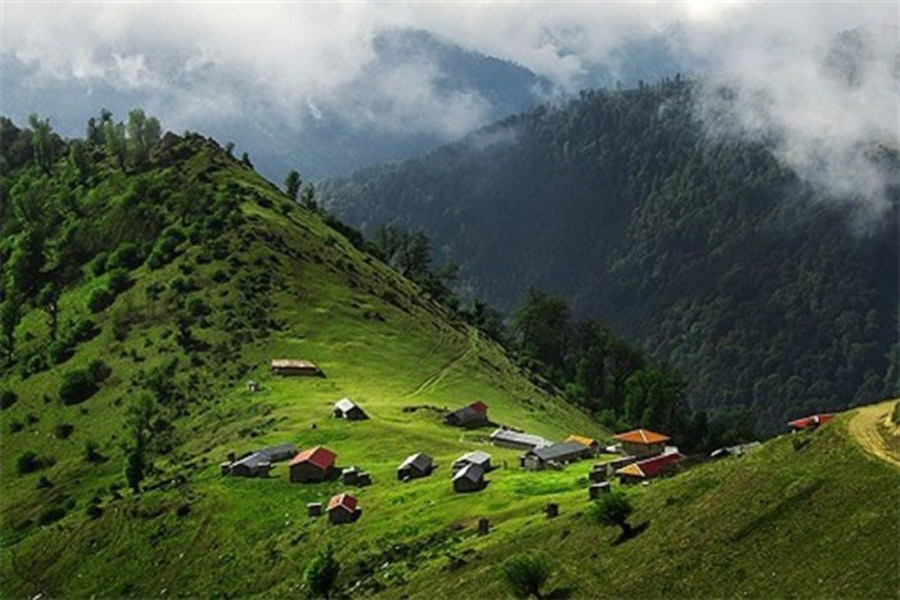
Lahijan Lake
Lahijan Lake is an artificial lake at the foot of Sheitan Kooh in the city of Lahijan. It’s a green area with pleasant weather which is a great place for walking and family picnics and it has a friendly atmosphere. The mountain across from the lake (Sheitan Kooh) offers a great view of the lake and the whole city. There are also traditional cafés and restaurants around the lake
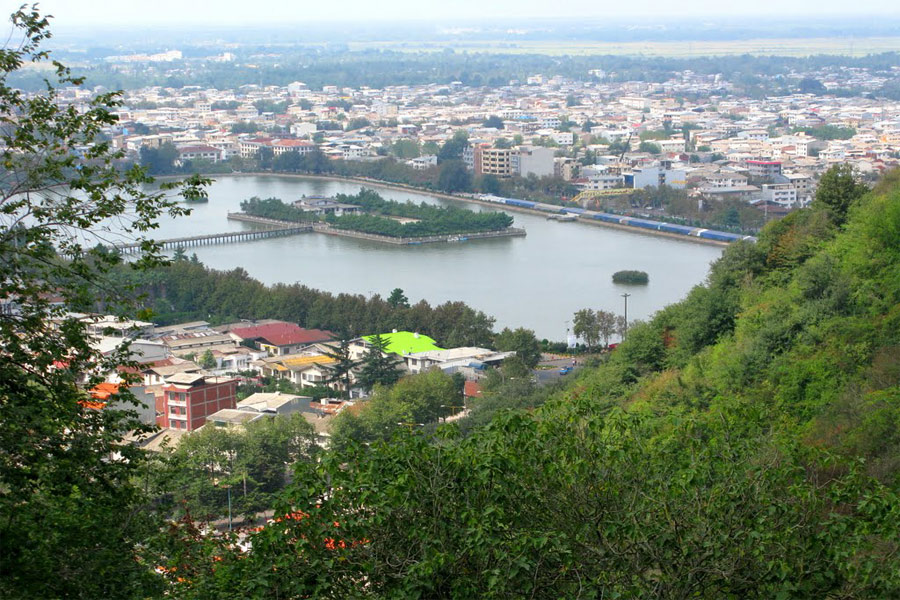
Asalem-Khalkhal Road
Asalem-Khalkhal is a dreamlike forest road and one of Iran most beautiful roads in the midst of foggy forests which connects Gilan Province to Ardabil Province. It is about 20 hours of hiking in forests and mountains, but it should be accompanied by an experienced guide. Visitors can find hostels in this way. Best time for going to this area is summer

Subatan
Subatan Countryside is a dreamlike lush land amongst mountains. Although reaching to this hidden paradise is tough, it’s absolutely worth all the effort. There are lots of things to see and enjoy, including rural cottages and groups of horses. This place is also near to exquisite Neor Lake and Talesh Forests. It’s suggested not to go there in cold months
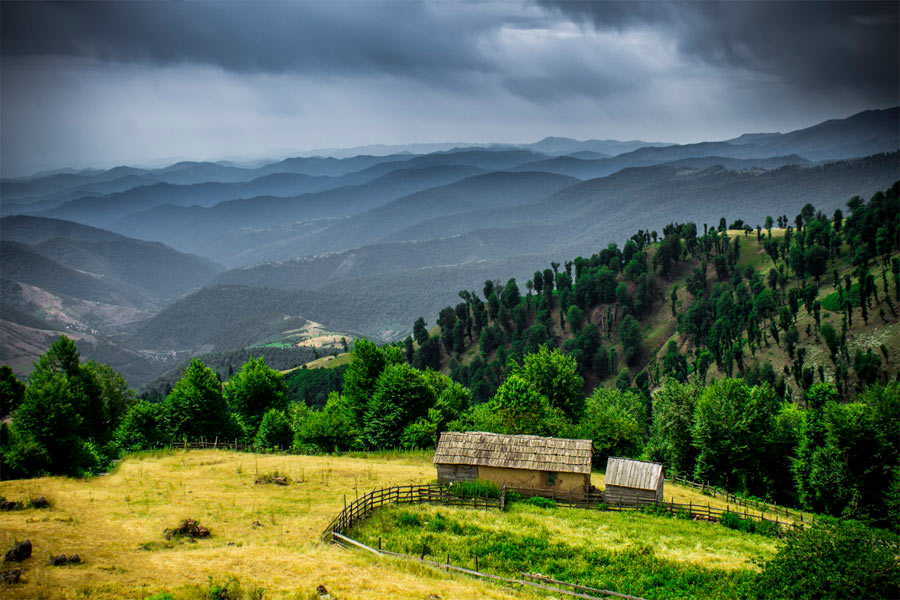
Boujagh National Park
Boujagh is a wetland (national park) by Sefidrud river. It is home to over 200 species of birds that come from different parts of the world to this place every autumn. Besides birds, there are groups of horses and fishermen in their boats. Visitors could see many stunning views there, especially in spring
.jpg)
Laton Waterfall
Laton is the highest waterfall in Iran (105 m high) near the city of Astara. For reaching to this attractive waterfall, you should pass through beautiful dense forests in highlands which it takes you 4 hours
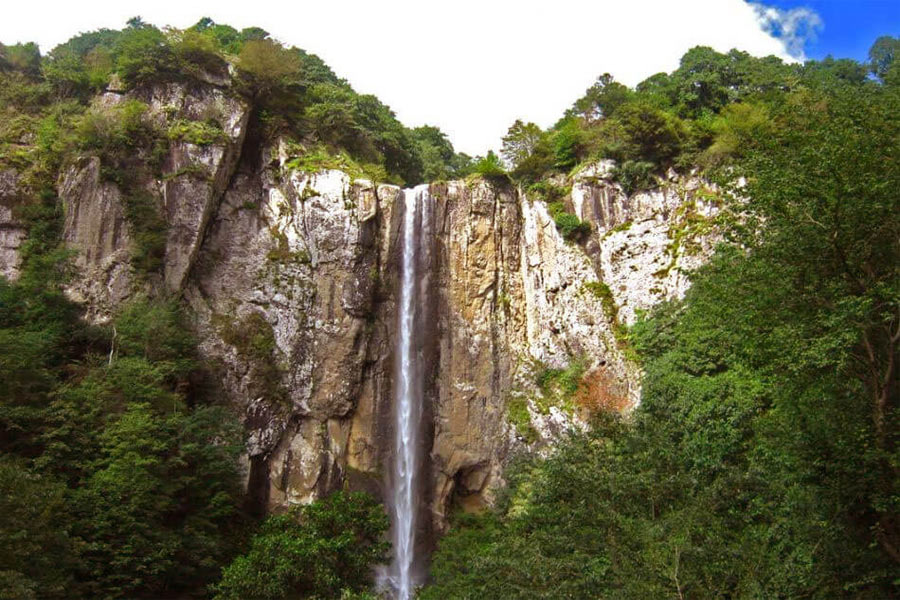
Heyran Pass
Heyran pass which connects Astara to Ardabil is the most beautiful road in Iran. This road passes among mountains, forests, and green lands and you will be enchanted by its exquisite scenery. The gondola lift is 1,500 meters long through beautiful landscapes of Alborz mountain range, there are really wonderful views of foggy lush highlands
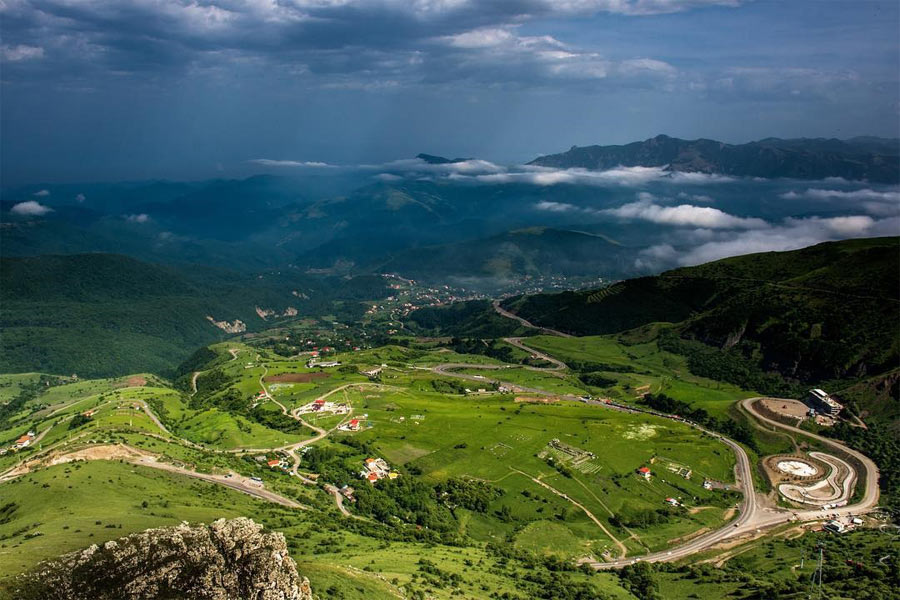
Chamkhaleh Beach
The best beach of Caspian Coastline is the sandy “Chamkhaleh Beach” which is a great and peaceful place for swimming or sun tanning. You will also enjoy watching a wonderful view of the sea, and an unforgettable sunrise by the sea from this lovely beach
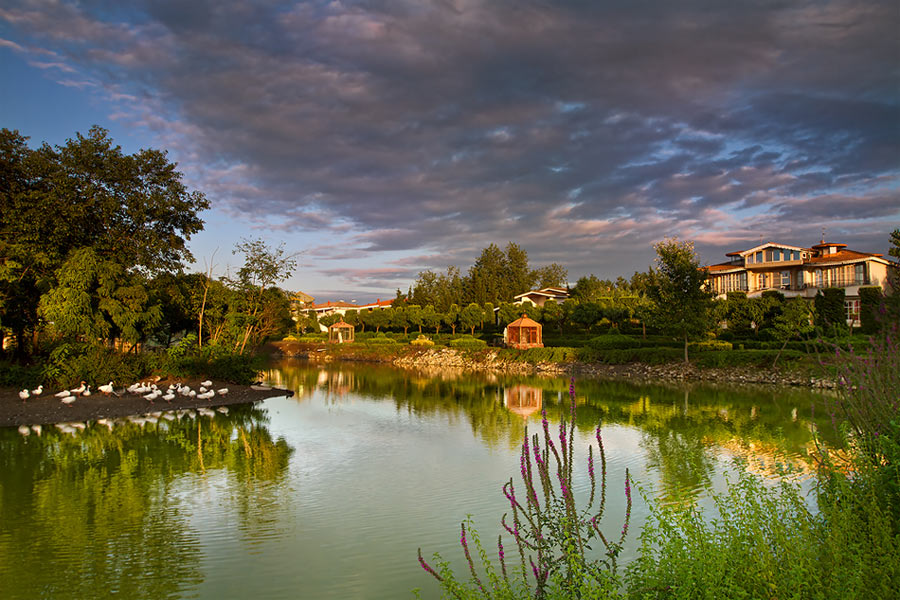
UNDERSTAND GOLESTAN PROVINCE
Despite its unbelievable beauty, Golestan province is among the least visited attractions in Iran. However, the region is such a charming destination- both naturally and culturally- that can keep you busy for weeks. Golestan Located in the north-eastern part of Iran and south of the Caspian Sea, Golestan has some of the greenest landscapes of Iran. In addition, the region has a very rich history and was one of the most important cities of ancient Persia on the silk road. The weather in Golestan is almost mild throughout the year. But, the best time to visit the region would be around April and May in Spring and October in Autumn. The colorful forests of Gorgan, the capital of Golestan province, are really well-known and popular among nature lovers. Many attractions have still remained intact here and this provides travelers who love to explore natural and less visited places with a great opportunity
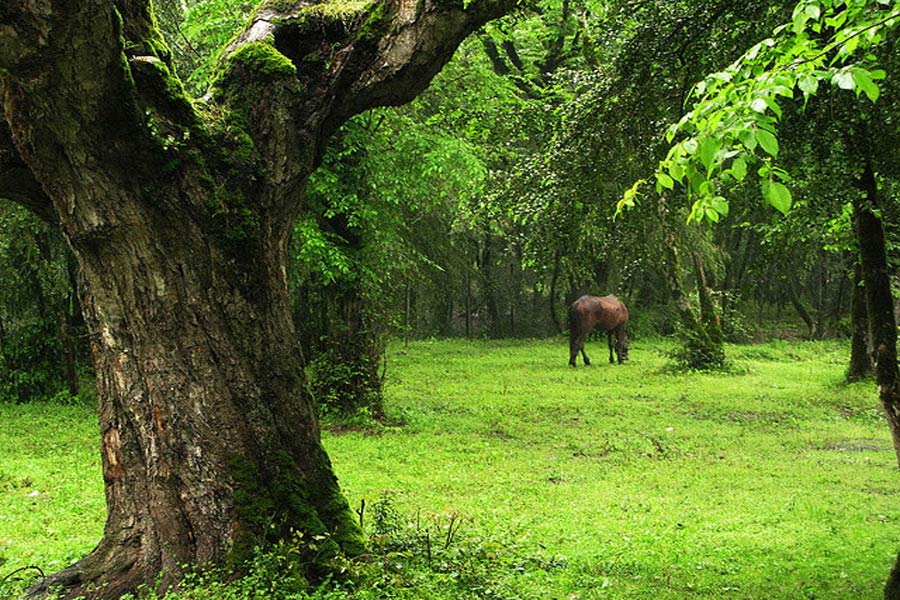
WHAT TO SEE IN GOLESTAN
GOLESTAN NATIONAL PARK
This is one of the oldest and largest national parks in Iran which extends in 3 provinces: Golestan, Mazandaran and North Khorasan. Because of its remarkable geographical location, the park has wide climatic zones and ecosystems, ranging from humid near the Caspian Sea to desert farther south. Therefore, Golestan National Park is home to many species of animals such as brown bear, wolf, jackal, red fox, wild cat and 150 types of birds

KHALED NABI
A mysterious cemetery and a mausoleum, both called Khaled Nabi, have located on a mountain peak, near the border with Turkmenistan. According to oral tradition, Khaled Nabi was a pre-Islamic prophet. The cemetery itself is a unique site, with more than 600 standing stones spread out in several locations. But what makes this site even more attractive, is the exceptional view it offers to a landscape covered with velvet-smooth rolling hills. This natural attraction has been chosen by National Geographic as one of the breathtaking landscapes that make up this captivating nation
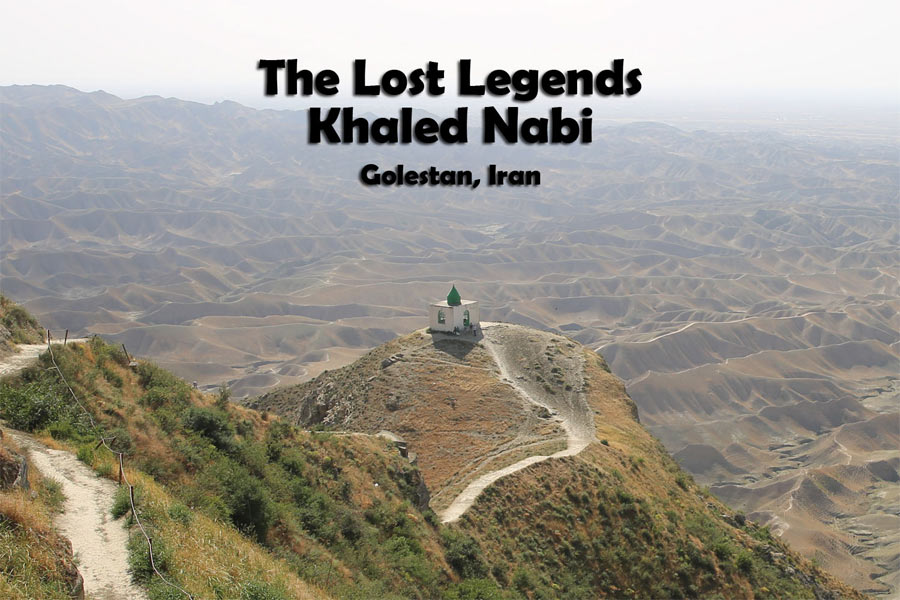
JAHAN NAMA VILLAGE
The village is located in a protected area with the same name and is surrounded by a vast plain between the Alborz mountains and Hyrcanian forests. These forests are among the oldest ones in the world and the area is also known as the roof of Golestan province due to its height. The untouched mountain forests of this protected region provides a great place for tigers to freely live
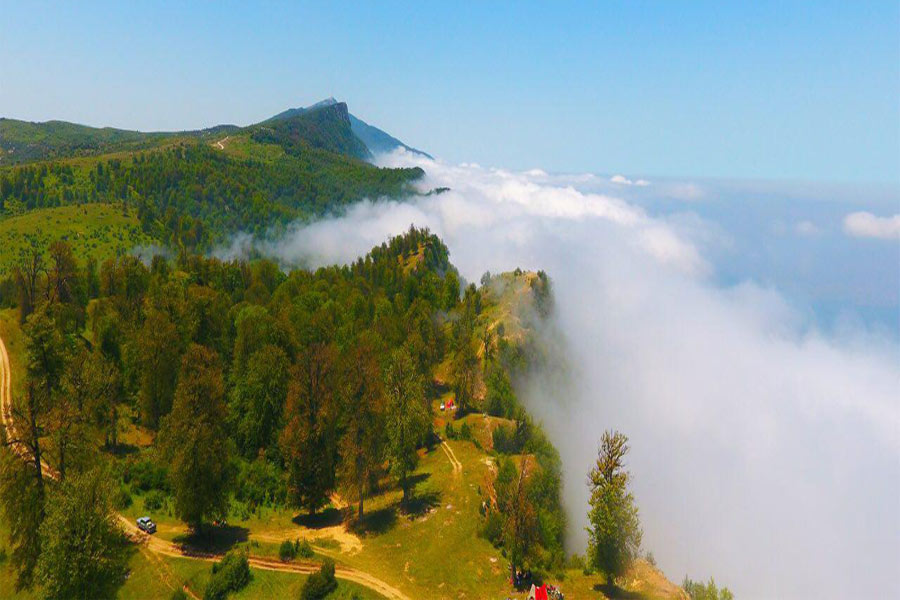
UNDERSTAND MAZANDARAN PROVINCE
Mazandaran is one of the most densely populated provinces in Iran and has diverse natural resources, especially large reservoirs of oil and natural gas. The province’s four largest counties are Sari, Amol, Nur, and Tonekabon . Founded as a province in 1937, Mazandaran was declared the second modern province after neighboring Gilan. In the early 20th century, Reza Shah (The King of Iran ) connected northern Elbourz to the southern slopes by constructing 7 new roads and railways, the provinces of Mazandaran and Gilan became known as Shomal by all Iranians (meaning “the North” in Persian). It is a Caspian province in the north of Iran. Located on the southern coast of the Caspian Sea, it is bordered clockwise by Russia (across the sea), Golestan, Semnan, Tehran, Alborz, Qazvin, and Gilan provinces. Sari is the largest city and the capital of Mazandaran province. The diverse nature of the province features plains, prairies, forests, and rainforest stretching from the sandy beaches of the Caspian Sea to the rugged and snowcapped Alborz sierra, including Mount Damavand, one of the highest peaks and volcanos in Asia, which at the narrowest point (Nowshahr County) narrows to 5 miles. Mazandaran is located on the southern coast of the Caspian Sea. It is bordered clockwise by Golestan, Semnan and Tehran provinces. This province also borders Qazvin and Gilan to the west. Mazandaran province is geographically divided into two parts: the coastal plains, and the mountainous areas. The Alborz Mountain Range surrounds the coastal strip and plains of the Caspian Sea. Given the climatic changes and varying rates of rainfall in different parts of Mazandaran province, this region has a variety of climates, including the mild and humid climate of Caspian shoreline and the moderate and cold climate of mountainous regions. The western and central plains of the province, up to the northern foothills of Alborz Mountain Range, experience the mild climate of the Caspian region. In the 1,500- to 3,000-meter altitudes, there is a moderate mountainous climate, with long, cold winters, and short, mild summers. In this region, snow covers parts of the province even up to the middle of the warm season. In fact, snow can be observed in this region even in the warmest months of the year, which lends a touch of beauty to this region
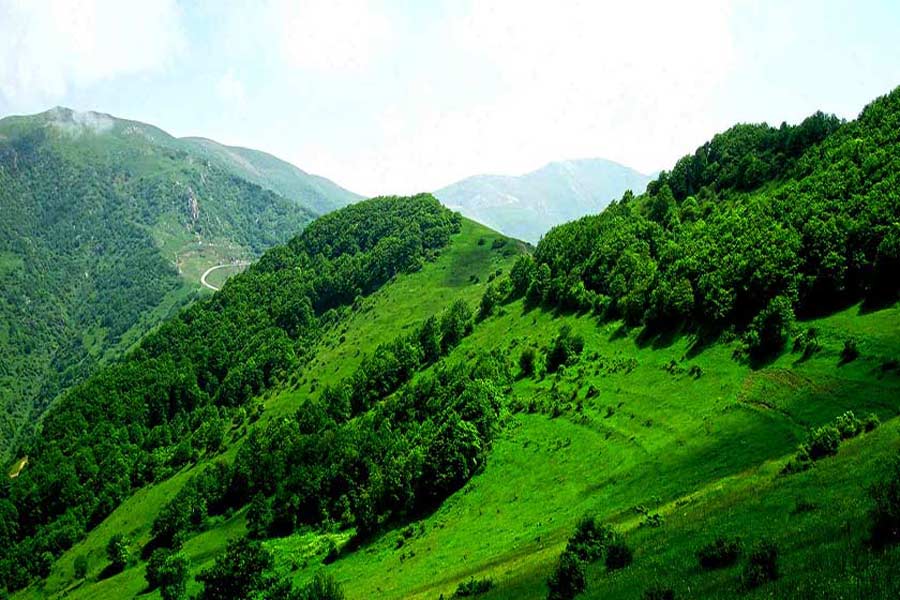
Badab-e Surt Springs
Visual Adventure
Mysterious “Badab-e Surt Arvest” springs, meaning the intensity of the sparkling water are included 12 completely different springs from the aspect of smelling and taste. The flow of the spring has made the spectacular stairways on land with an area of about three hectares and has formed in the quaternary of geology. One of these springs which is the main fountain and has very salty water has a little pond that it is mainly used for swimming and water treatment (hydrotherapy). In one part of a floor of the pond, there is a deep hole is called the Bermuda Erost. There are black sediments around the ponds which are beneficial for the treatment of back and legs, skin disease, Rheumatism, and migraine. Due to the high salinity of the hole and consisting of a lot of minerals, there are no living creatures and the water doesn't freeze on winters at all. The other 11 springs in the vicinity of this mainspring are very small and are known as the elixir of life. Its water has a little sour taste and is permanently have some gaseous leakage like soda. There are only six somewhat similar spring-like Badab-e Surt in the world. Pamukkale in Turkey, Bagni San Filippo in Italy, Agoura El Hierro in Mexico, Bayshivaytay in China, yellow stones in the United States of America and The Pink Terraces, or Otukapuarangi in New Zealand. If you want to take photos to go there during sunset or sunrise when you can see a wonderful view of light reflection on the ponds. The light reflection changes color in the ponds, several times, blue, yellow, red and brown. From Tehran to Orost village, all the roadways are asphalt, but from Orost village to Badab-e Soort springs you will have to drive on a rough road for about 3 km. From the base of the mountain, you have to climb about 3 km to get to the springs. You can also pay local people to take you up by trucks. We suggest climbing the mountain instead of using trucks. It is safer and you can enjoy the beautiful nature around too. If you want to climb the mountain instead of using the trucks, we suggest getting help from a local guide. With just a 15 minute walk you can see the wonderful springs, also you will be able to see a wonderful, impressive view of springs and mountains from the top. If you are a backpacker, it’s better not to stay in the village for the night because it’s a little difficult to find a local house for rent. There aren’t toilet facilities around the springs, but there are some small shops selling tea, dough, juices, cigarettes, etc

Ramsar
Ramsar is one of the dreamiest cities in the northern part of Iran, located in the western part of Mazandaran province which is full of beautiful and unique attractions. Traveling to this city and make sure to visit Javaher village, Markooh castle, Ramsar Cable Car, Ramsar Marble Palace, Safarood Forest Park, Grasmasar Summer Resort, Sadat Mahalleh, Luca Cave and Mijran Dam
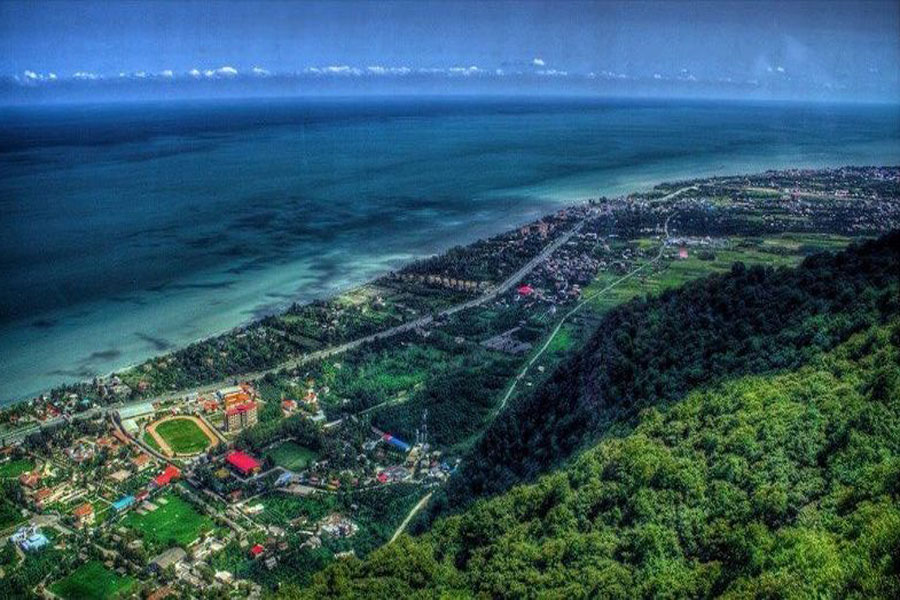
Javaher Deh Village
Javaher Deh Village, 27 kilometers from Ramsar and in Sakht Sar Rural District and on Alborz Mountains of 2000 meters height, is located in the skirts of high Samasus Mountains and among pastures and grasses.The most famous mountains of it includes Sorkh Tale (the eastern side of Samamus Summit) and Vazhak Se Barareh Rezheh (Rajeh). The highest mountain among these is Sorkh Tale summit. Lapa Sar with its famous and medicinal springs and Samamus and the Tomb of Shah Yahya Kiayi on Chakad Summit of Samamus ith permanent frieges are some of the sights and attractive places in Javaher Deh Village. The upper streams of this village along with outstanding waterfalls, the vast forest park between the valley that is beside Safarud River and a river with sparkling mineral water are some of the tourist attractions in the area
